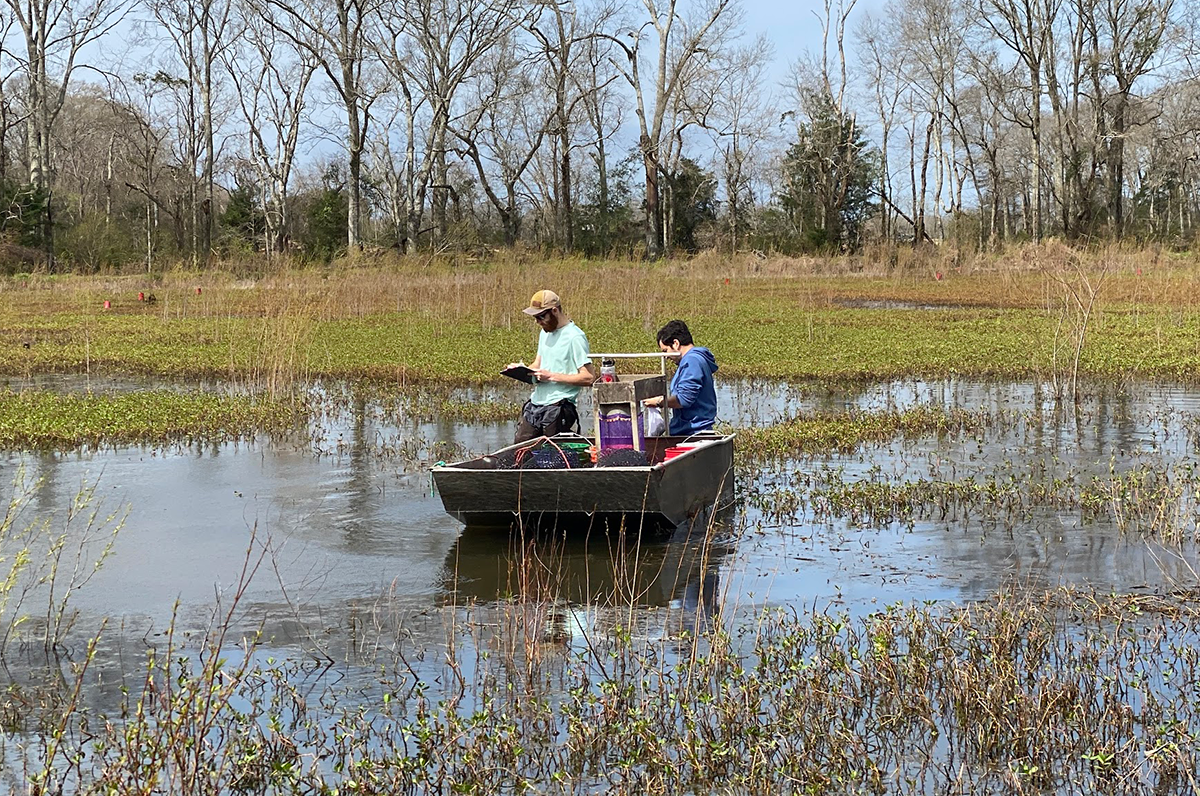University of Louisiana at Lafayette biologists and undergraduate and graduate students are examining the effectiveness of invasive carp as crawfish bait, research that’s being funded by the Louisiana Department of Wildlife and Fisheries.
The state agency for managing Louisiana’s fish and wildlife resources has long explored ways to control invasive carp, which are native to Asia. The fish were introduced to the United States in the 1970s to help rid commercial ponds, aquaculture facilities and wastewater basins of unwanted biomass.
The carp have since overrun waterways in many states and have proven detrimental to aquatic ecosystems. They consume massive amounts of plankton, algae and small organisms, for one, depleting food sources essential to some native species.
Controlling invasive carp populations, though, hinges on creating commercial demand for them. Initiatives to establish the fish as table fare in Louisiana and other regions of the U.S. have yet to gain widespread traction, however.
The Ray P. Authement’s College of Sciences’ Dr. Kelly Robinson, an associate professor, and Dr. Emily Kane, an assistant professor, are exploring an alternate solution. They are leading a team of researchers from the college’s School of Biological Sciences that, along with collaborators at Nicholls State University, are analyzing invasive carp’s potency as crawfish bait.
For their part, UL Lafayette researchers are analyzing data collected during fieldwork earlier this year in commercial crawfish ponds made accessible by an industry partner, St. Landry Crawfish Company. Additional fieldwork will follow in 2026. Data collected in controlled laboratory experiments is also being examined as part of the study.
Initial research suggests that red swamp crawfish are being drawn to traps in commercial ponds baited with invasive carp. Scientists are seeing similar results when using dry bait pellets made with invasive carp.
Researchers at Nicholls State University, on the other hand, are working to determine if red swamp crawfish in the Mississippi-Atchafalaya River Basin are similarly attracted to invasive carp.
Final findings of the ongoing study, according to Robinson, could incentivize large-scale harvest of invasive carp by commercial fishermen, who would benefit from the abundance of the fish as well as ready, robust market for their catches.
“Louisiana’s crawfish industry is a cultural and economic touchstone,” explained Robinson, the study’s principal investigator. “Producers in Louisiana alone supply 90% of all of America’s crawfish.”
According to the Louisiana Department of Wildlife and Fisheries, the crawfish industry contributes more than $300 million to the state’s economy annually.
Photo caption: UL Lafayette biologists and students are examining the effectiveness of using invasive carp as crawfish bait. The research is being funded by the Louisiana Department of Wildlife and Fisheries, which is exploring ways to make the nuisance fish commercially viable. Submitted photo
UL Lafayette researchers studying invasive fish species’ viability as crawfish bait
Published
